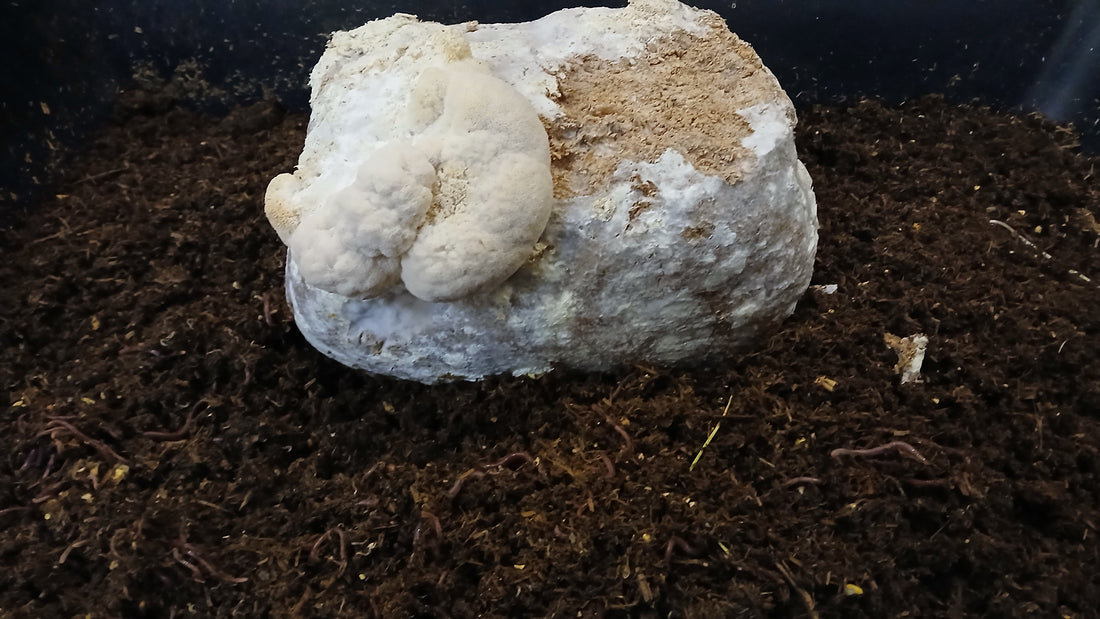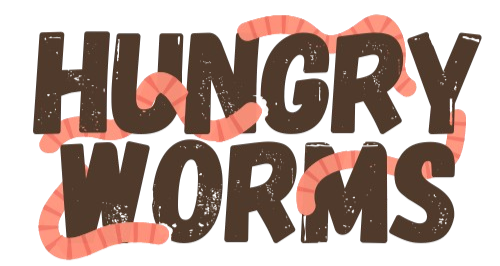
Worm Composting Spent Mushroom Substrate Blocks
Share
- Spent Mushroom blocks are the waste product from mushroom farming
- Blocks are either a mix of oak and soybean, or compost/manure.
- Worms love it! But be careful of high salts, or hot composting
- They can improve the microbiome of your bin
What are spent mushroom substrate blocks?
SMS blocks are the "waste" product of mushroom cultivation. Fungi colonize the substrate and turn many of the nutrients within it into mushrooms. The spent blocks are typically either a mix of oak sawdust and soybean hulls (referred to as Master's Mix) or a manure/compost mix depending on what mushrooms are being grown. Your mushroom provider will be able to tell you what they use. The manure/compost mix has a tendency to be salty, so use it with caution in your worm bins!
Are spent mushroom blocks good for worms?
Yes! Worms love spent mushroom blocks - especially master's mix blocks. The fungus doesn't take out all of the nutrition, and slightly "precomposts" the material, making it worm-edible pretty readily. However, since there is still some undecomposed nutrition left, if you add too much SMS at a time it can cause hot composting, so pay attention to your temperatures.
Will spent mushroom substrate improve the microbiology in my worm bin?
Mushroom farms grow their fungi on sterile conditions. This fungi has never had to compete for a meal its entire life. When it gets placed into a worm bin, its going to get introduced to all sorts of competition, so it's not super likely that it will colonize through the worm bin.
Kind of like if a person was grown without exposure to any germs, not developing any antibodies, and then suddenly gets exposed to all sorts of sicknesses... it'd be a rough ride!
However, if the blocks have some mushrooms on them, or grow new mushrooms, the spores these mushrooms drop have a better chance at growing in your system as the spores, which are dropped by the millions, have different genetics and other factors that give them a bit of a better chance of establishing.
In this picture, you can see Lion's Mane fruiting on a spent mushroom block. The spores this mushroom produces will fall into the bin below.
Additionally, the spent blocks are fungal foods, and even if the fungus that was on the block doesn't colonize, it can help facilitate the growth of fungal species that were already in your bin.
Best Practice Adding Mushroom Blocks to Worm Bins
Treat it like a high nutrition food - too much can overheat the bin!
If you want to get spores, keep the block intact and moist. You could even keep it out of the bin for a while, keeping it misted with water to encourage mushrooms to grow. If you can get mushrooms, let them finish growing over your bin so that any spores will drop into the vermicompost.
Otherwise, you can just crumble it up and mix it into the bin.
Get Spent Mushroom Blocks for Your Worms
Most people can find a mushroom grower close to them who'd be happy to give away their blocks. But, if you want, you can grow your own mushrooms with our grow kits and you get to eat the mushrooms, and your red wigglers get to eat the spent substrate after! It's a win win!
